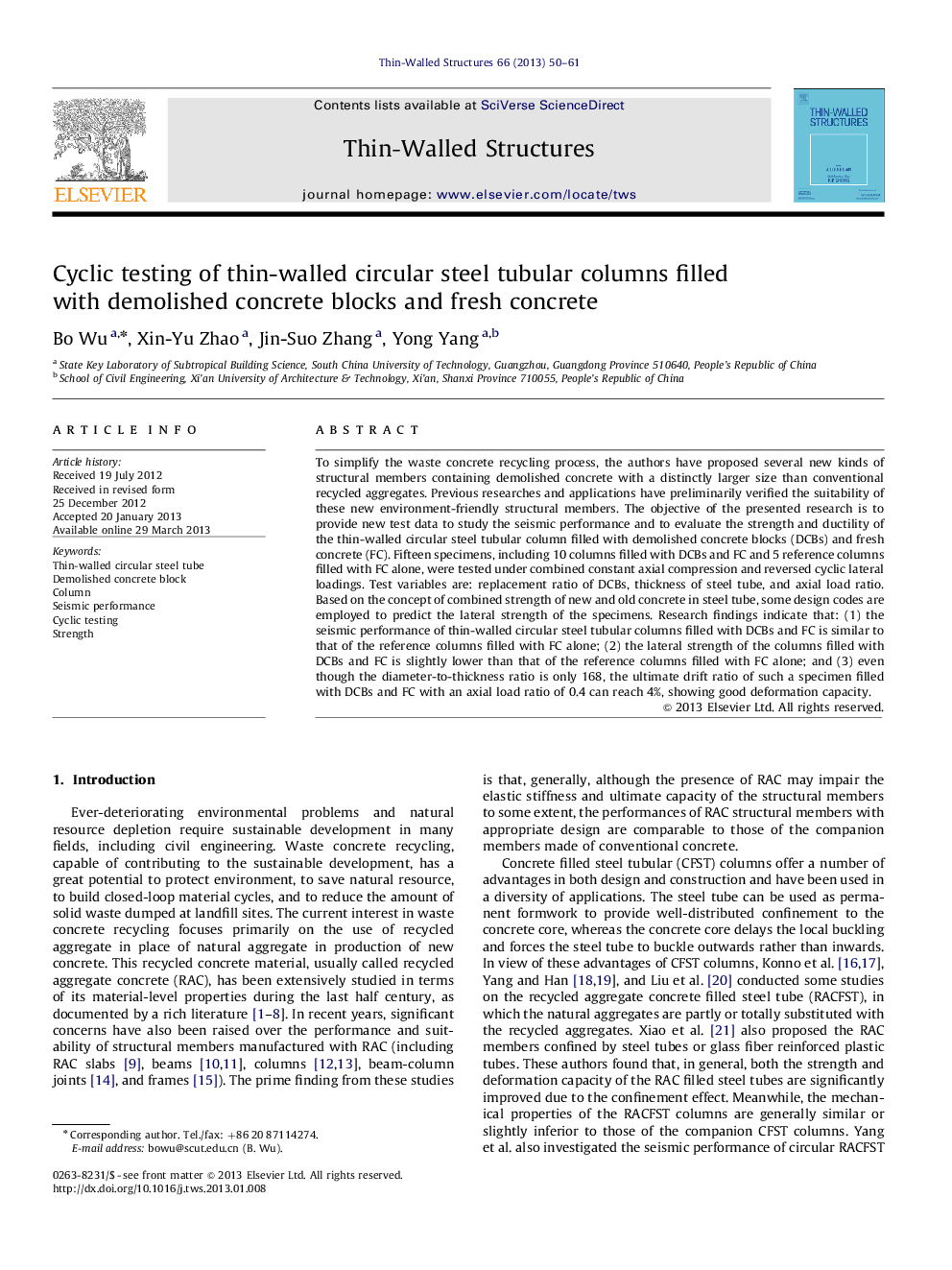| Article ID | Journal | Published Year | Pages | File Type |
|---|---|---|---|---|
| 309267 | Thin-Walled Structures | 2013 | 12 Pages |
To simplify the waste concrete recycling process, the authors have proposed several new kinds of structural members containing demolished concrete with a distinctly larger size than conventional recycled aggregates. Previous researches and applications have preliminarily verified the suitability of these new environment-friendly structural members. The objective of the presented research is to provide new test data to study the seismic performance and to evaluate the strength and ductility of the thin-walled circular steel tubular column filled with demolished concrete blocks (DCBs) and fresh concrete (FC). Fifteen specimens, including 10 columns filled with DCBs and FC and 5 reference columns filled with FC alone, were tested under combined constant axial compression and reversed cyclic lateral loadings. Test variables are: replacement ratio of DCBs, thickness of steel tube, and axial load ratio. Based on the concept of combined strength of new and old concrete in steel tube, some design codes are employed to predict the lateral strength of the specimens. Research findings indicate that: (1) the seismic performance of thin-walled circular steel tubular columns filled with DCBs and FC is similar to that of the reference columns filled with FC alone; (2) the lateral strength of the columns filled with DCBs and FC is slightly lower than that of the reference columns filled with FC alone; and (3) even though the diameter-to-thickness ratio is only 168, the ultimate drift ratio of such a specimen filled with DCBs and FC with an axial load ratio of 0.4 can reach 4%, showing good deformation capacity.
► DCBs with large size have a potential to be reused directly as structural materials. ► Cyclic tests of circular thin-walled steel tubes filled with DCBs & FC were conducted. ► DCBs have insignificant effects on seismic performances of the proposed columns. ► These green composite columns with large D/t ratios show good deformation capacities. ► Lateral strengths of the proposed columns are predicted by codes and fiber elements.
